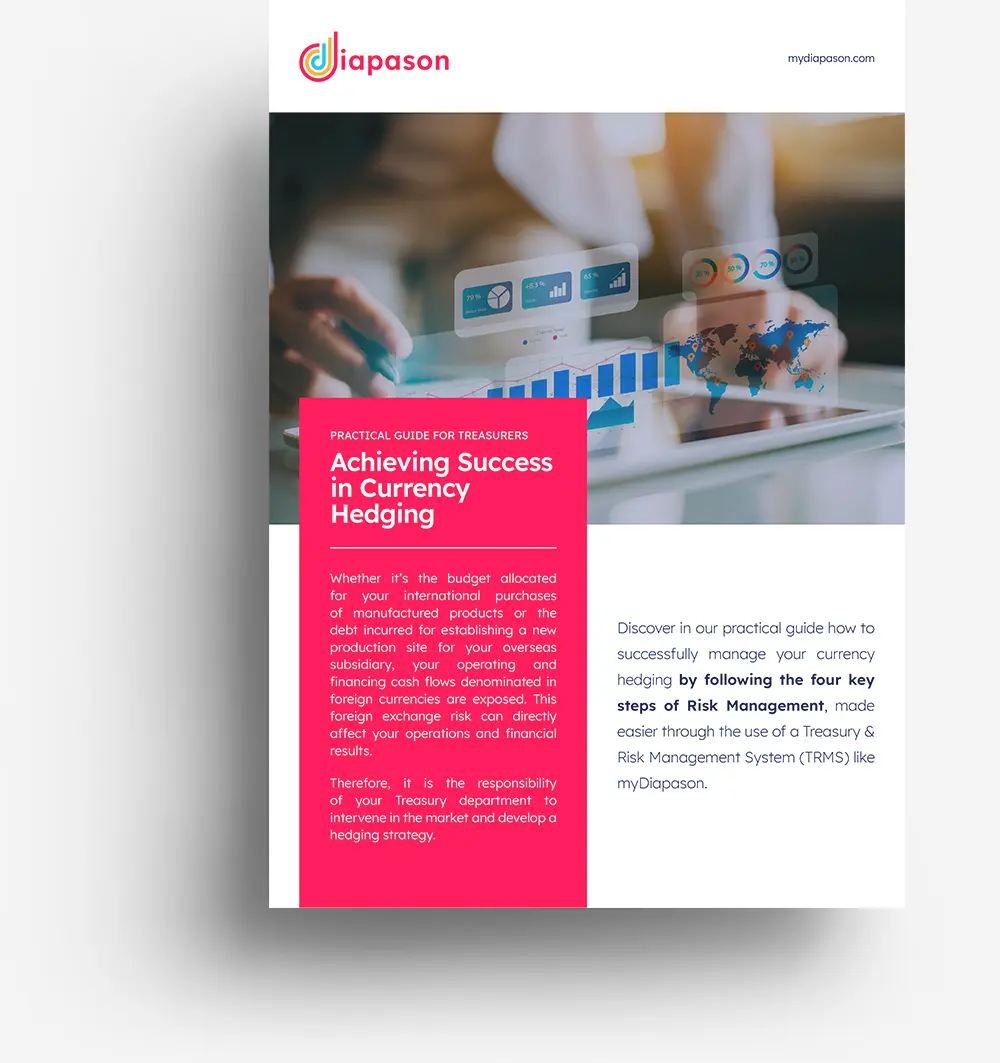Regardless of size or industry, all businesses must ensure effective cash management to guarantee financial stability and long-term viability. However, manual cash management can be cumbersome and prone to errors, potentially causing detrimental impacts on the company’s finances. This is precisely where treasury management software comes into play to address these issues.
Treasury management software is a solution that automates and streamlines cash management for businesses. It enables real-time tracking of cash flows, anticipation of liquidity needs, management of banking operations, centralization of financial data, and much more. By using such a tool, companies can enhance their cash management, reduce financial risks, and increase profitability.
In this article, we will delve into what treasury management software is, guide you on selecting the best solution for your business, and provide insights on its everyday use.
What is Treasury Management Software and How Can It Revolutionize Your Financial Operations?
A Treasury Management Software, known as TMS (Treasury Management System) or TRMS (Treasury Risk & Management System), is a computerized tool designed to assist businesses in managing their cash flows more efficiently and automatedly. It provides specific features such as handling incoming and outgoing cash flows, liquidity forecasting, payment and receipt management, centralizing financial data, and much more.
The use of treasury management software brings numerous advantages to businesses.
The use of treasury management software offers several advantages for businesses. Firstly, it saves time and enhances efficiency by automating repetitive and tedious tasks associated with cash management. This frees up human resources to focus on more strategic tasks.
Moreover, treasury management software provides greater accuracy in financial data. Automated calculations and real-time updates reduce the risk of human errors, leading to improved reliability of financial information.
Another significant advantage is the increased traceability of financial transactions. Treasury management software accurately records all cash operations and movements, facilitating the management of audits, checks, and regulatory compliance.
Additionally, access control and data security features integrated into treasury management software enhance the security of financial transactions. This helps prevent fraud and reduce risks associated with fund manipulation.
In addition to these benefits, treasury management software also offers advanced features such as detailed financial analysis, customizable reports, and cash flow forecasting.
This allows companies to make more informed financial decisions and plan their cash flows more effectively.
In summary, using treasury management software enables businesses to:
- Save time,
- Improve the accuracy of financial data,
- Enhance transaction traceability,
- Secure financial operations,
- Make more informed decisions.
There are several treasury management solutions available on the market, each with its own features and advantages. It is crucial to choose a solution that aligns with the specific needs of your company, considering factors such as company size, industry, and budget.
How to Choose Treasury Management Software Effectively?
The choice of treasury management software may seem complex, given the numerous solutions available in the market. To find the best fit for your business, it’s crucial to consider certain key criteria.
Firstly, it’s important to define the specific needs of your company in terms of cash management. For instance, do you require a tool to handle international payments? Do you need a solution for cash flow forecasting? Or do you simply need a tool to centralize your financial data? By defining your specific needs, you can narrow down your search to find a suitable solution.
Another significant criterion is the user interface’s user-friendliness. The software should be easy for your team to use and comprehend. Additionally, consider the training and technical support provided by the solution’s provider.
Lastly, cost is also a crucial factor to consider. Treasury management software can vary significantly in cost based on functionality and provider. It’s essential to establish a realistic budget for your business and find a solution that aligns with both your needs and budget.
In summary, here are the key criteria to consider when selecting treasury management software:
- Functionality: Ensure the treasury software provides essential features that meet your needs.
- Integration: Check if the software can easily integrate with other systems you use.
- User-Friendliness: Evaluate whether the software’s user interface is intuitive and easy to use.
- Security: Confirm that the software has robust security measures, including data encryption, restricted access to authorized users, and regular data backups.
- Scalability: Anticipate your business’s future growth and ensure the treasury software can adapt to your evolving needs.
- Support: Verify if the provider offers adequate technical support in case of issues or questions.
- Budget: Carefully assess the costs associated with treasury software, including license fees, maintenance fees, upgrade fees, etc.
- User Feedback: Review customer testimonials and request demonstrations to evaluate the software before making a final decision.
In conclusion, choosing treasury management software is a significant decision for your business. By defining your specific needs, you can find a solution that enhances your cash management and enables more informed financial decisions. An effective treasury management tool can streamline operations and contribute to your overall financial success.
How to Utilize Treasury Management Software Effectively?
The use of treasury management software can bring numerous benefits to your business, but it’s crucial to follow certain practices to maximize results.
Here are some tips for effectively using your treasury management software:
- Set Clear Goals: Before starting to use your treasury management software, define clear objectives for your business. This may include cost reduction, optimization of cash flows, improvement of financial data accuracy, etc.
- Utilize All Features: Treasury management software offers a wide range of features. To make the most of your tool, ensure you use all available features, including cash flow forecasting functions, risk management tools, payment and collection features, etc. Some vendors offer academies and certification training to enhance your knowledge of the tool.
- Integrate Your Software with Other Tools: For optimal cash management, application programming interfaces (APIs) enable the integration of your software with other financial tools such as your accounting software or payment management system. Using APIs with your TMS solution will optimize your workflow and ensure increased data accuracy.
- Train Your Team: To maximize the benefits of your treasury management software, it’s essential to train your team in its use. Ensure your team understands how to use the tool and interpret financial data for informed decision-making.
- Regularly Update: Treasury management software is constantly evolving, so it’s important to regularly update to benefit from the latest features and improvements.
By following these practices, you can optimize the use of your treasury management software and significantly enhance your business’s financial management.
The Various Treasury Management Solutions
There are several hosting models for your treasury management tool, but the two main options are Software as a Service (SaaS) treasury management software available via the cloud and On-Premise treasury management software installed on-site. It is crucial to understand your needs to make the right choice.
Here is some information on the differences between SaaS and On-Premise to determine the most suitable hosting mode for your needs:
- SaaS Treasury Management Software: Accessible from Anywhere
SaaS treasury management software applications are hosted in the cloud and can be accessed from anywhere via an internet connection. They offer increased flexibility in terms of mobility and collaboration as they can be accessed from any device connected to the internet. The software provider is responsible for updates, security patches, and general system maintenance. Users do not need to worry about these technical aspects. SaaS treasury management software is often billed on a monthly or annual subscription basis, providing greater budget flexibility and avoiding significant upfront investments. - On-Premise Treasury Management Software: Installed and Hosted on Company Servers
On-Premise treasury management software applications are installed and run on the company’s servers. This hosting type allows the company to have full control over the environment, data security, and system performance. However, it also requires an internal team to manage updates, backups, and system maintenance. On-Premise hosting requires larger upfront investments for license acquisition, hardware infrastructure, and human resources to manage the system. Licenses are often charged as perpetual licenses with additional fees for updates.
How to Choose Between SaaS and On-Premise?
By comparing the advantages and disadvantages of each solution, you can choose the one that best fits your team’s specific needs.
Advantages of SaaS Treasury Solution:
- Accessible from any computer connected to the Internet.
- Maintenance and updates provided by the vendor at no additional cost.
- Quick implementation as there is no need to install the software on all servers and computers.
Disadvantages of SaaS Treasury Solution:
- Payment of a monthly or annual subscription.
- Storage and protection of your data depend on the service provider.
- Unable to work in case of internet connection problems.
Advantages of On-Premise Treasury Solution:
- Data security, for which you remain responsible.
- No need for an internet connection.
- No regular fees, only the initial purchase of the software.
Disadvantages of On-Premise Treasury Solution:
- Annual maintenance fees and update costs outlined in a maintenance contract.
- Requires IT infrastructure to support the software.
- Long-term risk of obsolescence in the absence of a maintenance contract.
Considering these advantages and disadvantages, you can determine which solution best fits your needs. It is important to evaluate aspects such as internet connectivity availability, data security, short and long-term costs, as well as internal resources available for software management and maintenance. This analysis will enable you to make an informed decision between the SaaS and On-Premise models.
In conclusion, investing in treasury software brings numerous essential advantages for businesses. By using such software, companies can manage their treasury more effectively by tracking, analyzing, and controlling cash flows. This enables them to make informed decisions to optimize the use of their liquidity and avoid unproductive shortages or surpluses.
Furthermore, the forecasting and planning features integrated into treasury software help companies anticipate their future cash needs, facilitating better management of investments, payments, and borrowings. Treasury software also contributes to reducing financial risks by providing risk management tools such as currency and interest rate management.
Automating treasury management processes through TMS saves time, improves efficiency, and reduces errors. The accurate reports and analyses provided by these tools offer a clear view of the company’s financial situation, facilitating strategic decision-making and communication with stakeholders.
By investing in a treasury solution, businesses can strengthen their financial management, minimize risks, optimize liquidity usage, and increase operational efficiency. This contributes to financial stability, promotes growth, and enables more informed decision-making to ensure the long-term success of the business.
About the Author
Célia Tinoco, Marketing and Communication Officer
Célia has joined the Marketing team as a Marketing & Communication Officer. In the content area, she writes in-depth and timely articles on topics related to the treasurer’s profession. Her goal is to provide treasurers with insights to better master their treasury management and support them in their daily tasks.








